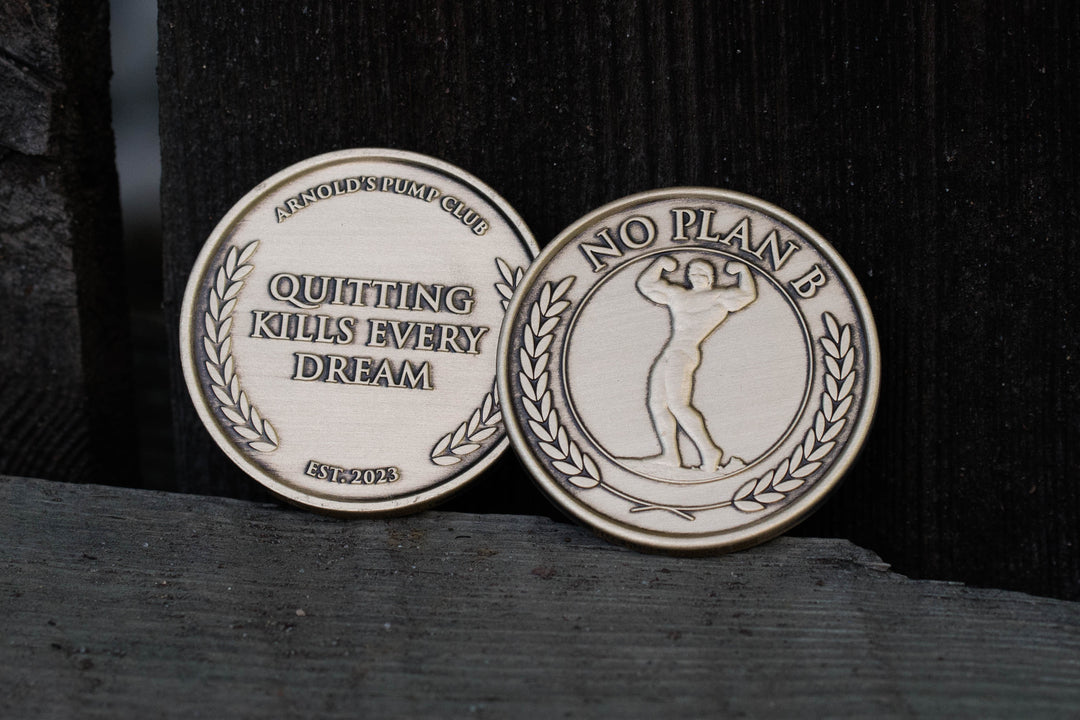Welcome to the positive corner of the internet. Every weekday, we make sense of the confusing world of wellness by analyzing the headlines, simplifying the latest research, and offering quick tips designed to make you healthier in less than 5 minutes. If you were forwarded this message, you can get the free daily email here.
Today’s Health Upgrade
How to break your phone addiction
The new seed oil study
Get up, stand up
Arnold’s Podcast
Want more stories from Arnold? Every day, Arnold’s Pump Club Podcast opens with a story, perspective, and wisdom from Arnold that you won’t find in the newsletter. And, you’ll hear a recap of the day’s items. You can subscribe on Apple, Spotify, Google, or wherever you listen to podcasts.
How To Spend Less Time On Your Phone
Earlier this week, we shared how much screen time children should get per day. However, the limits of screen time apply to adults, too.
If you want to spend less time on your phone, research suggests removing the color from your screen and rearranging your apps could help you reduce your addiction.
The average adult spends about 5 hours per day on their phone and checks it up to 144 times daily. And research suggests that approximately 70 percent of apps designed to lessen usage don’t help change your behavior.
If you want to spend less time looking at your phone, the most effective approach is shifting your phone to greyscale. Studies have found that it can reduce your daily phone usage by up to 50 minutes per day, help decrease anxiety, and increase overall well-being. But that alone isn’t enough.
While greyscaling your phone will lead to less time on it, research suggests it doesn’t help reduce how often you check your phone.
If you want to reach for your phone less often, you need to take action with some “self-nudging,” which are strategies that change your digital environment.
Removing notifications, turning off face unlock, shifting apps away from your home screen, hiding or deleting social media apps (and limiting to desktop use), and setting screen time reminders are all effective methods of self-nudging. It might also be helpful to charge your phone in a different room to avoid the typical doomscrolling that occurs early in the morning and late at night.
If you want to try grayscaling your phone, here’s how to find it on an Apple device: Settings >Accessibility>Display & Text Size >Color Filters>Switch to On and click Grayscale.
If you’re on Android: Settings > Accessibility > Color and motion>Select Color correction, scroll down, and select Grayscale.
Research suggests that many will switch their phones back to color, so get comfortable with the uncomfortable. That’s when the positive changes happen.
Do Seed Oils Cause Inflammation?
If you’ve spent much time on social media, you might have heard that seed oils — those higher in omega-6 fatty acids — are dangerous for your health.
However, a new study found that the seed oils did not increase inflammation or oxidative stress when calories were controlled.
Seed oils (also known as vegetable oils) are the latest food to come under scrutiny, with some suggesting that they caused the obesity crisis. While it’s true that many ultra-processed foods are highly caloric and tend to include more vegetable oil, it’s hard to determine whether the oils or the excess calories are causing the problems.
In fact, prior research examined 42 studies comparing canola oil to all the other oils, such as olive oil. The research found that canola oil significantly reduced total cholesterol, LDL cholesterol, LDL/HDL ratio, TC/HDL ratio, apolipoprotein B (Apo-B) & Apo-B/Apo-A1 ratio compared to all other oils (those are all good outcomes). And it even outperformed olive oil in some situations.
In the current study, researchers randomly assigned people to either consume saturated fat (butter) or polyunsaturated fats (PUFAs, AKA vegetable/seed oils) for ten weeks. Both groups ate the same amount of calories to ensure people weren't overeating.
Those who ate seed oils reduced liver fat and insulin and showed no signs of inflammation compared to the saturated fat (butter) group.
While some people might be critical of the duration of the study to say that it takes longer to see the negative effects of seed oils, it’s important not to overthink what was found. If ten weeks of eating seed oils led to better metabolic outcomes than saturated fat, there’s nothing to suggest that following the diet for longer would change that trend. Is it possible that eating more PUFAs over time could lead to some health issues? Certainly, but that would still make them a better option than saturated fat.
Generally, it’s best not to fear fat because it is necessary in your diet. Most research suggests getting most of your dietary fat from monounsaturated fats, such as olive oil, avocados, nuts, and seeds. You can then enjoy additional calories from polyunsaturated fat and saturated fat. If you’re worried about saturated fat intake, test your LDL cholesterol, especially your LDL particles and ApoB.
Our favorite test method is InsideTracker, which provides an easy way to analyze your blood and get personalized feedback and recommendations. As a perk of being a member of the positive corner of the internet, you get 10% OFF any InsideTracker plan.
Get Up, Stand Up
Even if you can’t find your way to the gym, you can still improve your health when you feel chained to a desk.
New research found that reducing the time you sit daily could improve your blood pressure, similar to exercise. That might not be shocking, but you’ll likely be surprised by how much less you need to sit to see significant changes.
Elevated blood pressure is one of the strongest risk factors for heart disease. And the more you sit, the more likely your blood pressure will increase. Some estimates show that we spend up to 60 to 80 percent of the day sitting as we age.
Researchers found that reducing sitting by just 30 minutes per day dropped systolic blood pressure by 3.5 mmHg, which is just a little less than exercise and a little more than what’s seen with weight loss.
If you need a place to start, copy the technique used by the study participants. They programmed reminders into their phone to stand up every 60 minutes. They also used standing desks to help reduce the time they were seated throughout the day. As we’ve recommended before, a good rule of thumb is to set at least three or four reminders throughout the day as a way to go for a five or 10-minute walk. That change alone can help you accomplish the recommended 150 minutes of movement per week.
—
Publisher: Arnold Schwarzenegger
Editors-in-chief: Adam Bornstein and Daniel Ketchell































































